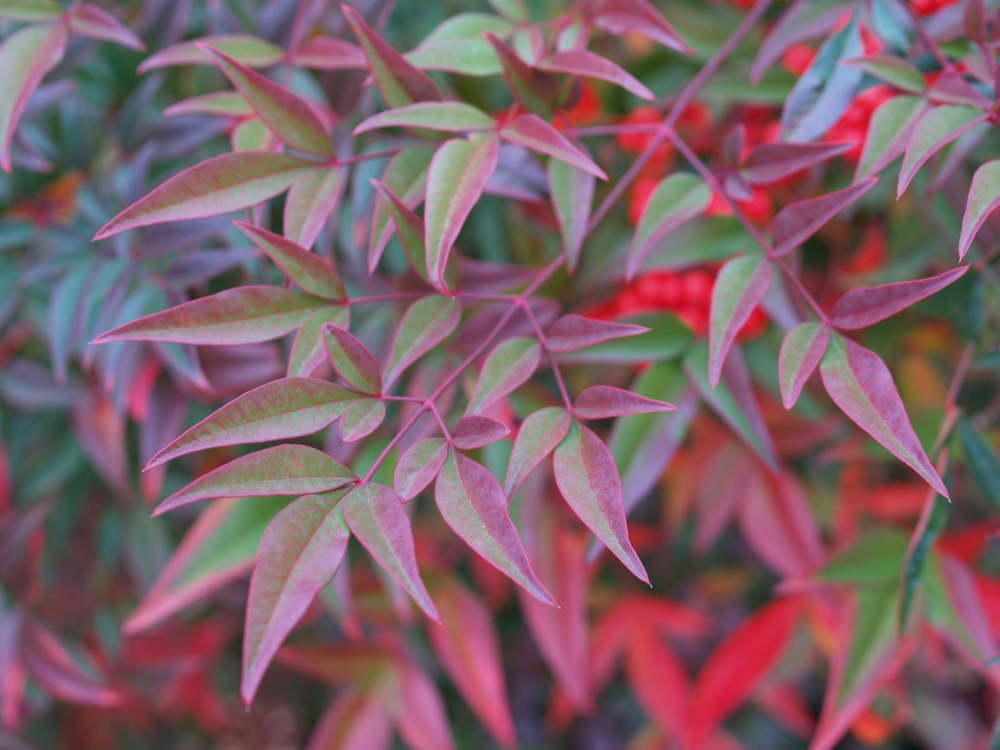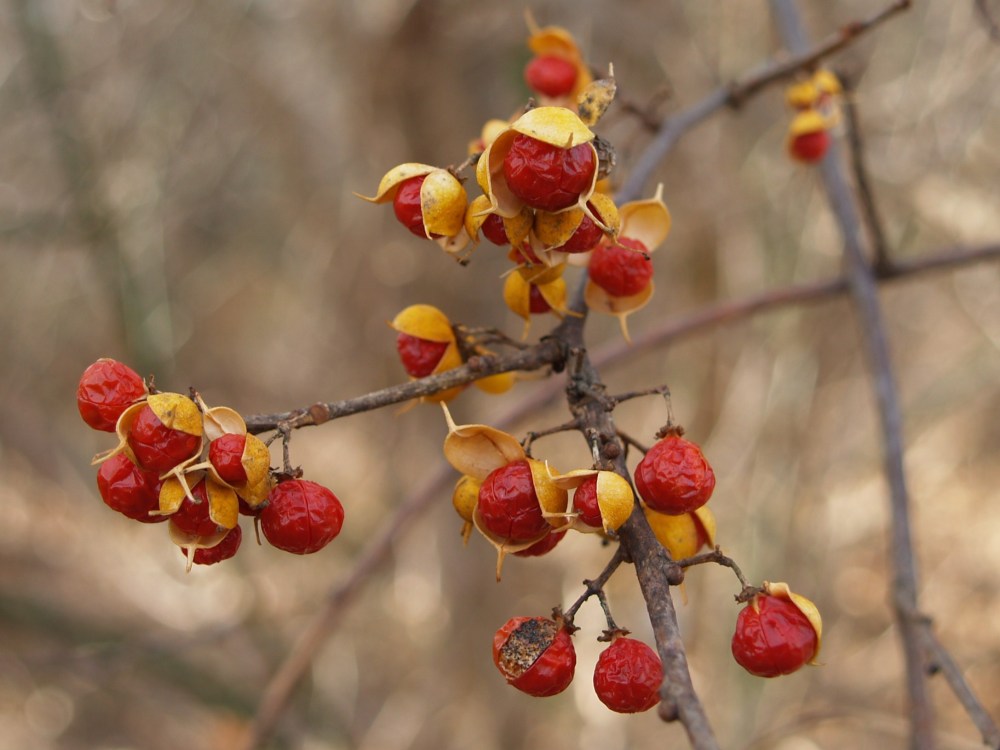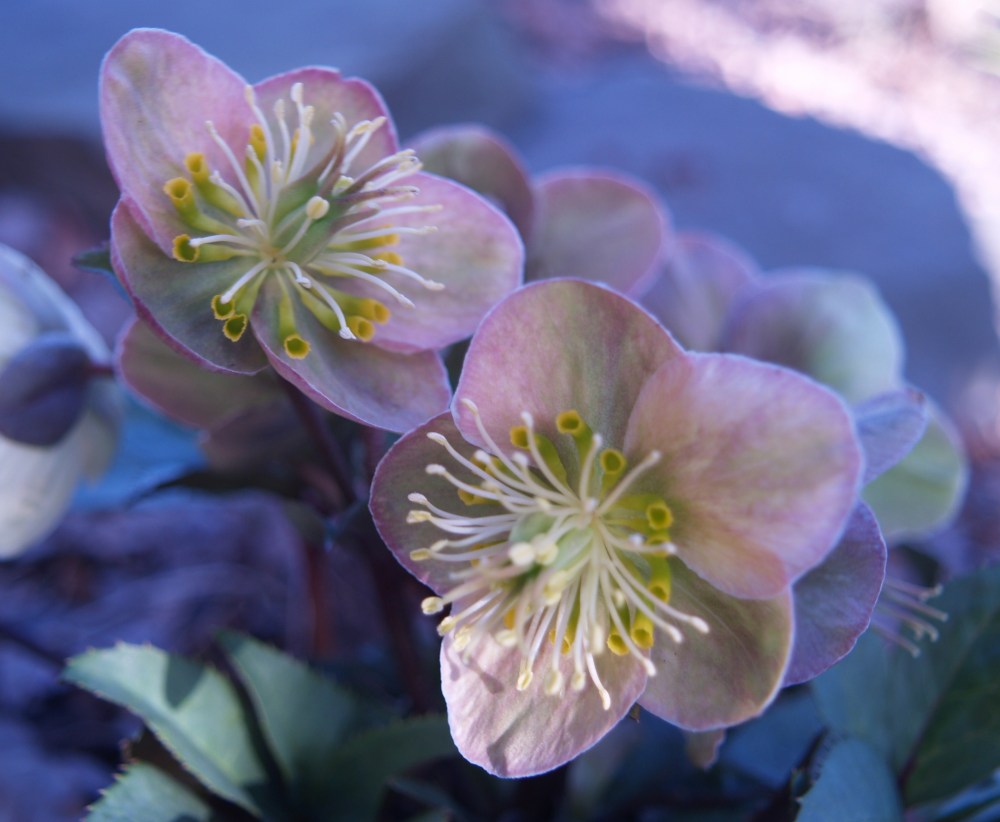Today, a dusting of snow remains over much of the garden, but by good fortune the more severe parts of winter storms have veered to the north or south. My son in Athens, Georgia reports seven inches of snow from the recent storm, but with little snow (or rain for that matter), this garden in northern Virginia is noticeably dry.
Without adequate moisture the foliage of nandinas (Nandina domestica, above) exposed to sun and winter breezes has browned, though this is more typical when overnight lows drop closer to zero. By early March I expect that the leaves will drop, and the stalks will be bare until late in April. Nandinas are semi-evergreen, so there is no surprise when leaves brown and fall, and no damage is done.
In mid-January shaded ‘Winter Sun’ mahonias (above) continue to show some cheerful yellow blooms, though they have faded from their peak a month earlier. In full sun the small cupped flowers on arching stems have nearly disappeared, with grape-like fruits to follow in several weeks. On a sunny afternoon many birds are seen in the rear garden, and the fruits will not last for long.
Birds stripped bare the red berries of the native dogwoods (Cornus florida) by early in December, but abundant holly and nandina berries remain. Walking through the garden a few days ago a cluster of berries caught my eye, the American bittersweet (Celastrus scandens, above) evident in the tangle of brambles at forest’s edge as birds perched to pluck the berries.
The late autumn flowering camellias were stopped in mid-bloom by the chill of December, and with a brief spell of average temperatures late in the month buds began to swell. Nothing came of it, and I don’t expect to see camellias blooming until late in March. The hybrid ‘Winter’s Interlude’ will bloom during extended warm periods in mid-winter, but these occur rarely, and I have not seen flowers on this camellia for several years.
The blooming buds of hellebores have become evident, but the flowers are not likely to open prior to late February in my low lying, cold-natured garden. Last year the hellebores were snow covered until the start of March, and the blooms opened a few days afterward (above), arriving with the late winter blooming bulbs that also were delayed under the snowy blanket.
‘Arnold’s Promise’ witch hazel flowers dependably by mid-February, regardless of snow, and with seed and perennial catalogs arriving daily I am counting the days until these early blooms arrive.